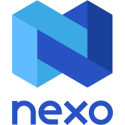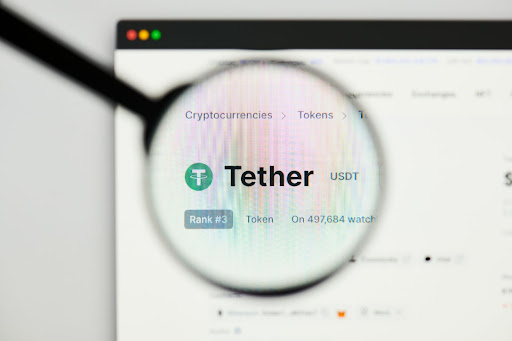As an investor, it’s hard to find generous yields from traditional banking products like savings accounts. Thankfully, the crypto industry has matured and is now offering low-risk investment products. Many of these products involve stablecoins, which are blockchain-based tokens with their price pegged to fiat currencies (usually the US dollar).
The largest stablecoin by market cap is Tether (USDT); here’s how you can make the most out of it.
| USDT | USDC | DAI | BUSD | ETH | |
| Aave | 2.32% | 0.98% | 0.80% | 1.35% | 1.07% |
| Compound | 1.63% | 0.74% | 1.08% | – | 0.17% |
| BlockFi | – | Up to 7.50% | Up to 6.00% | Up to 7.50% | Up to 3.50% |
| Nexo | Up to 12.00% | Up to 12.00% | Up to 12.00% | Up to 12.00% | Up to 8.00% |
| Binance | Up to 8.00% | – | 2.20% | 8.00% | Up to 5.20% |
| Crypto.com | Up to 6.50% | Up to 8.50% | Up to 6.50% | – | Up to 6.00% |
USDT Lending Platforms
If you want to generate high yields while reducing volatility risk, centralized lending platforms are the ideal choice. They operate similarly to traditional online lending services or banks. They will require you to pass through a KYC (know your customer) verification procedure before your account is approved.
We selected three of the most trusted lending platforms that support USDT and provide high yields:
BlockFi
BlockFi, which has been operating since 2017, is one of the most popular lending platforms. One of its main products is the BlockFi Interest Account (BIA), which enables investors to earn interest from their crypto. The interest accrues daily and is paid every month. Many beginners prefer BlockFi because it has no minimum balance requirement.
USDT deposits accrue an APY figure that can reach over 7%. In fact, the fixed interest (which is updated regularly) depends on BlokFi’s Interest Tiers as follows:
- Tier 1 – USDT deposits lower than 20,000 come with an APY of 7.25%.
- Tier 2 – USDT deposits between 20,000 and 5 million USDT have an APY of 6%.
- Tier 3 – USDT deposits that exceed 5 million provide an APY of 4.5%.
BlockFi offers a separate, personalized yield product for high net worth individuals (HNWIs), who can earn custom rates by negotiating these with BlockFi. Usually, the loan duration ranges from one to six months.
BlockFi allows one USDT withdrawal per month for free, after which users must pay a withdrawal fee.
Click to see current BlockFi interest rates.
 Nexo
Nexo
Another popular crypto lending platform is Nexo, founded in 2017. The platform provides an APY of up to 10% on USDT deposits. If you choose NEXO token rewards, the platform’s native token, you’ll earn an even higher APY. These are by far some of the highest interest rates in the market today. We also like Nexo’s intuitive interface, which can make a difference for beginners.
Retail and institutional investors choose Nexo because of its compound daily payouts and flexible earnings. Also, deposits are backed by $375 million insurance coverage through BitGo and Ledger.
Using the NEXO token not only provides better interest rates but more free crypto withdrawals and other perks.
Click here to see current Nexo interest rates.
Pros and Cons of Lending Platforms
| Pros | Cons |
| High yields – crypto lending platforms provide the highest yield on USDT deposits. | Centralized – since these are centralized platforms, you will have to transfer the custody of your USDT funds (private keys). |
| Low fees – most crypto lending platforms charge minimal fees. For example, Celsius claims to have no fees at all. |
USDT Lending on Exchanges
You can also earn interest on USDT lending with centralized crypto exchanges and platforms. They usually use funds to lend to traders who engage in margin trading. As a rule, you will have to lock your USDT for a predetermined period. Here are a few well-established crypto exchanges that support USDT lending:
Binance
Binance is by far the largest crypto exchange by trading volume. Since starting in 2017 as a spot exchange, it has turned into a diverse ecosystem that also offers futures and options trading, launchpad, liquidity farming, staking, and payment options, and more.
One of the main products is Binance Earn, which is a one-stop solution to earn interest, including interest on USDT. The APY on USDT flexible deposits is a generous 10.00%, though the rate drastically declines with higher deposits. Thus, if you deposit more than 2,000 USDT, you should expect an APY of only 3.00%.
Click to see current Binance interest rates.
 Crypto.com
Crypto.com
Founded in 2016, Crypto.com has become one of the biggest crypto brands thanks to multiple high-profile partnerships, especially in sports. The platform provides exchange, non-fungible token (NFT), payment, and lending services to over 50 million users worldwide. It offers insurance coverage of $750 million on all assets. In 2021, the company partnered with Visa to settle transactions on its payment network.
The Crypto Earn product supports USDT and provides APYs from 0.4% to over 5%, depending on your balance, as well as whether you are willing to hold CRO tokens and/or lock up your crypto for three months. You can pick from flexible and fixed-term deposits, but the former gives lower yields. The interest rewards are paid weekly.
Click to see current Crypto.com interest rates.
Pros and Cons of Lending on Exchanges
| Pros | Cons |
| Diverse ecosystem – large crypto exchanges incorporate all forms of crypto operations that are a few clicks away. | Centralized – crypto exchanges are storing your funds in their custody, meaning that you don’t have full control over your funds. |
| Lower yields – most crypto exchanges offer lower yields compared to crypto lending platforms. |
USDT DeFi Lending
If you want to have full control over your funds and not share your personal information with anyone, you might opt for Decentralized Finance (DeFi) lending protocols. DeFi is one of the most important trends within the crypto industry, as it enables users to access financial services run by algorithms and powered by blockchain rather than being managed by centralized entities.
 Aave
Aave
Aave is the second-largest DeFi protocol, with a total value locked (TVL) figure near $8 billion. Stablecoins play a leading role on Aave, accounting for over 30% of all deposited assets.
The interest rate for contributing with USDT liquidity is well over 1%. Although this is far less than interest rates offered above, there are no lockup periods and no minimum balance. (You will usually pay transaction fees to move money in and out.)
Click to see current Aave interest rates.
Compound Finance
Aave’s direct competitor is Compound, which has a TVL of $4 billion as of this writing. The lending protocol triggered the DeFi craze in the summer of 2020, when it launched its governance token.
USDT is playing a leading role here as well, with the APY on USDT deposits coming in at well over 1%.
Click to see current Compound interest rates.
Pros and Cons of DeFi Lending
| Pros | Cons |
| Decentralized – DeFi protocols are run by algorithms, which completely reduces potential human errors. Also, they don’t require KYC/AML verification from users, who have full control over their funds. | Lower yields – DeFi lending protocols offer much lower rates compared to centralized counterparts. |
| High fees – some DeFi protocols, such as those built on Ethereum, come with high gas fees. Nonetheless, the list of low-cost alternatives built on Avalanche, Polygon, and other blockchains is growing. |
What is USDT?
USDT is a stablecoin cryptocurrency issued by Tether Limited, a company launched in 2014. USDT has its price pegged to the US dollar-based on a 1:1 ratio. It is hosted on the Ethereum blockchain as an ERC-20 token.
Tether claims that USDT is fully backed by reserves consisting of US dollars, cash equivalents, other short-term deposits, and commercial paper. The latest attestation report was released by MHA Cayman, confirming that USDT tokens are fully backed.
At the time of writing, USDT’s market cap exceeds $72 billion, putting it in the top 3 largest cryptocurrencies after Bitcoin and Ethereum. The stablecoin has played a key role in the crypto industry, bridging the gap between blockchain and traditional finance.

Why are USDT Yields so High?
The yield provided by traditional savings accounts is less than 1%, so how come USDT rates are higher? This is a good question considering that USDT has its price pegged to the US dollar, reducing the volatility risk to almost zero.
Nexo, BlockFi and others offer better rates thanks to a business model in which users lend cryptocurrency to borrowers willing to pay higher rates. The latter are ready to use their crypto as collateral, which isn’t possible with traditional banks. Thus, the growing demand for loans against crypto collateral is driving the interest rates.
USDT Staking vs. Lending
Staking and lending are two ways for investors to profit from their crypto holdings without selling them. Traditional savings accounts cannot generate significant yield in today’s low-interest-rate environment. Thankfully, investors can use stablecoins like USDT for staking and lending instead.
The main difference between staking and lending is that the former requires users to lease their USDT to a blockchain or crypto platform in exchange for rewards, while USDT lending requires them to lease the funds to borrowers to earn interest.
Keep up to date with developments in lending and staking when you subscribe to Bitcoin Market Journal.















More Stories
U.S. Congressmen Seek Information Over Govt’s Crypto De-bank Efforts
Is It Worth Trading in Forex Markets in 2023?
Ethereum Outshines Bitcoin As Enthusiasm Grows